Less than a hundred kilometers from Sri Lanka’s southern coast the landscape quickly changes. We drove through rural areas with flat rice fields, banana farms and coconut groves. Then all of a sudden, small mountains appeared. It was a lovely site with green rice fields in the foreground and steep, tree covered mountains climbing steeply behind. We were about to enter tea country in the Sri Lankan Highlands.
At the top of one of the mountain ridges is the small touristy town of Ella. After driving up the winding jungle hill, we were surprised to see a hectic main street filled with western restaurants and bars. Ella is very popular with tourists because there is a lot to do in the surrounding hills. At 1200m elevation it’s quite chilly compared to the beaches lower down, but it’s ideal for hiking.

Mini Adam’s Peak is a small hill on the edge of town. The hike to the top begins at a tea plantation where we walked by plantation workers plucking tea leaves and collecting them in large cloth bags strung across their forehead. Apparently when the British established tea plantations in Sri Lanka, they brought a million workers from southern India who were mostly of Tamil heritage. They are called ‘Plantation Tamils’ to differentiate them from the Tamils of northern Sri Lanka who have been in Sri Lanka for over 2000 years and were involved in a recent civil war.
In the middle of the tea plantation we saw the Tamil workers’ tin-shack ‘village’. After the plantation, the route climbs a narrow ridge with green vegetation on the steep slopes that are very picturesque. We followed the ridge to the top where we had a spectacular vista of the valley.







A popular early morning lookout is Ella Rock, a cliff high above town. The first 40 minutes of the trek follows the railroad track. It felt like we were breaking our childhood rules about staying off the railroad tracks, but here it’s encouraged. The tracks are actually used as a main pedestrian corridor for people to get between their homes and town. When the trail leaves the railroad tracks, it goes uphill, through a small tea plantation, until it became a steep rocky mountain trail. Ella Rock is a tall cliff at the top of the hill that provides nice early morning views down the valley. Further along the ridge we found another lookout with an even nicer view. We could even see part of Rawana Waterfall far below.









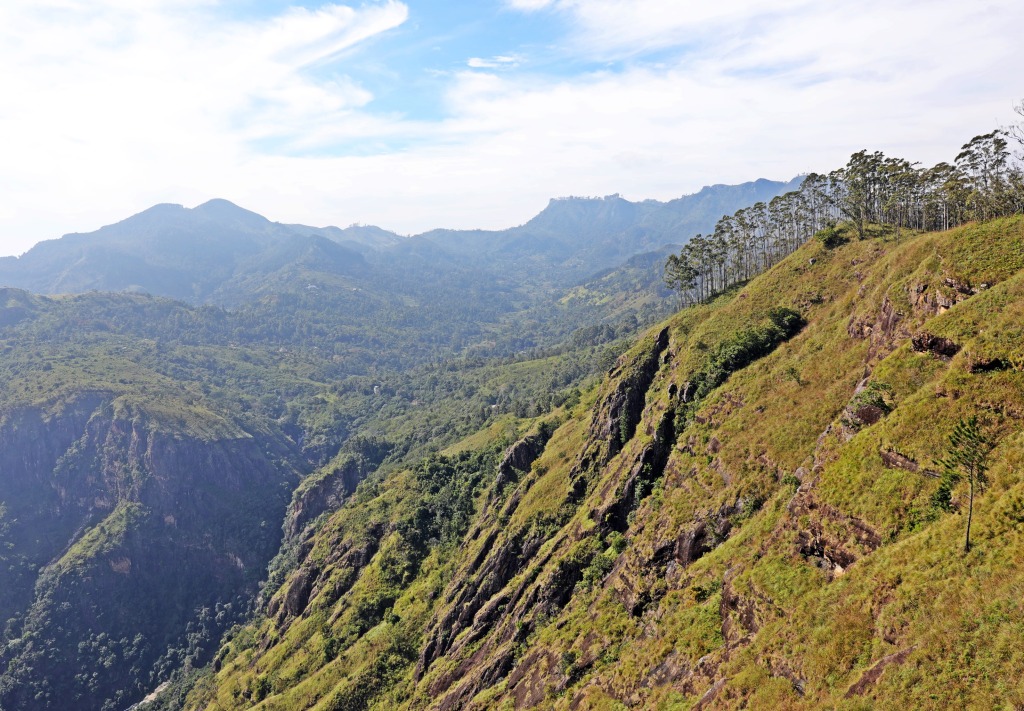
Rawana Waterfall cascades over large boulders from rocky cliffs over 25 m above and is surrounded by a dense jungle. Playful toque macaques with their mop of hair on the top and black lips and ears, swing from the trees and play on top of the large boulders at the base of the falls. We were there in dry season, but the falls were still quite impressive.



When the British ruled Sri Lanka they built many railway tracks that are still used today. Just outside of Ella is a lovely, old stone bridge that spans a narrow valley. Nine Arch Bridge, built in 1921, is very picturesque in its jungle setting. The bridge has tall brick columns with large oval holes and rounded arches. But its the perfect curve of the track as it crosses the valley that adds the finishing touch to its beauty.





Further west on the railroad track, the train tracks take an interesting course. When the railroad was being built, the engineers didn’t know how to manage the steep hills in the area. They were discussing their conundrum when a local farmer offered a solution. The farmer said to build the tracks similar to how he wraps his turban, and so they did. The village of Demodara sits on a small hill. The train arrives at the the base of the hill which is 20m below the train station. It travels through a tunnel that is directly under the station. After exiting the tunnel, the train slowly winds its way around a hill, gradually increasing in elevation. By the time it reaches the station, it is 20 m higher than it was only 2 minutes before. It crossed its own track, from 20 m above.



The countryside around Ella is filled with small green hills covered in tea plantations. The train ride from Ella to Haputale lets you enjoy the spectacular landscape. There are bright green tea plantations taking over small hills and villages with vegetable and flower gardens in the valleys. The old train goes nice and slow so you can take in the views.





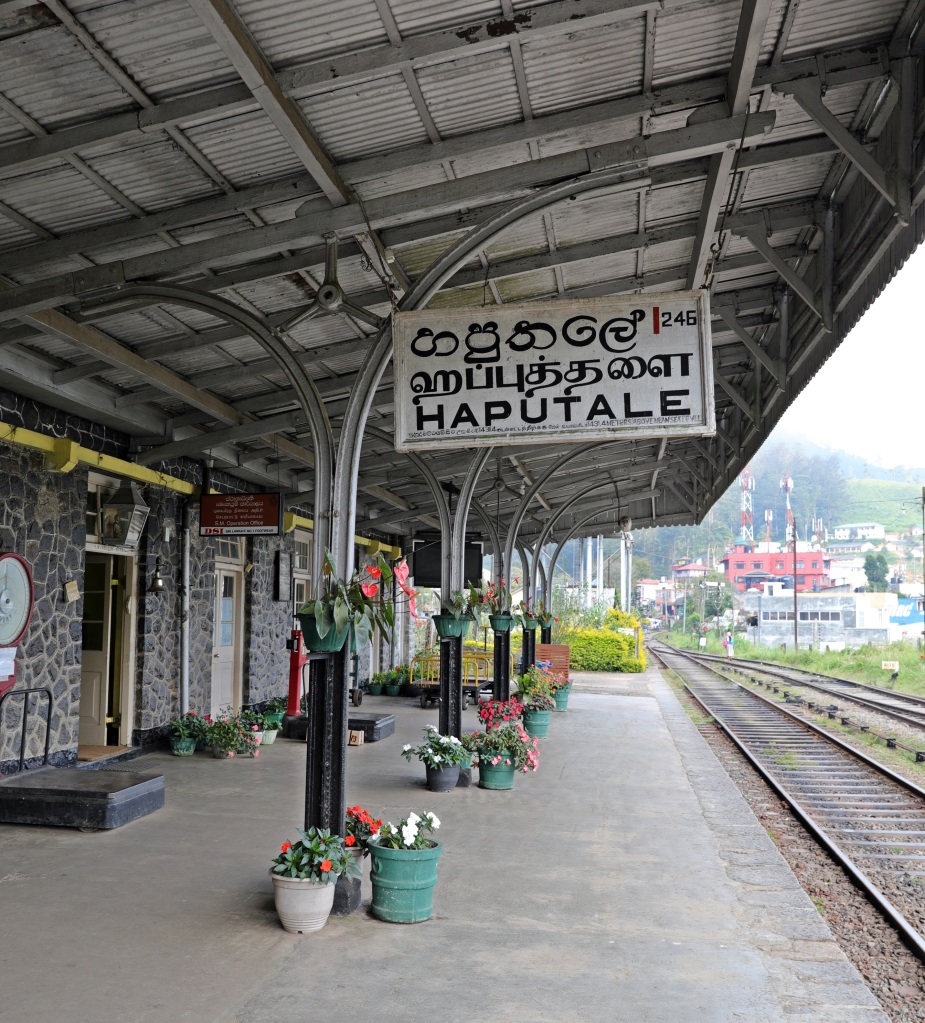
The town of Haputale is located in an ideal tea growing region. In every direction the hills are covered in 3 ft tall tea trees. It was so beautiful to walk in the hills outside of town and enjoy the scenic vistas. Not far from town is the Adisham monastery of Saint Benedict. The catholic monastery’s lovely old brick building is set in a beautiful location in the hills of tea country.





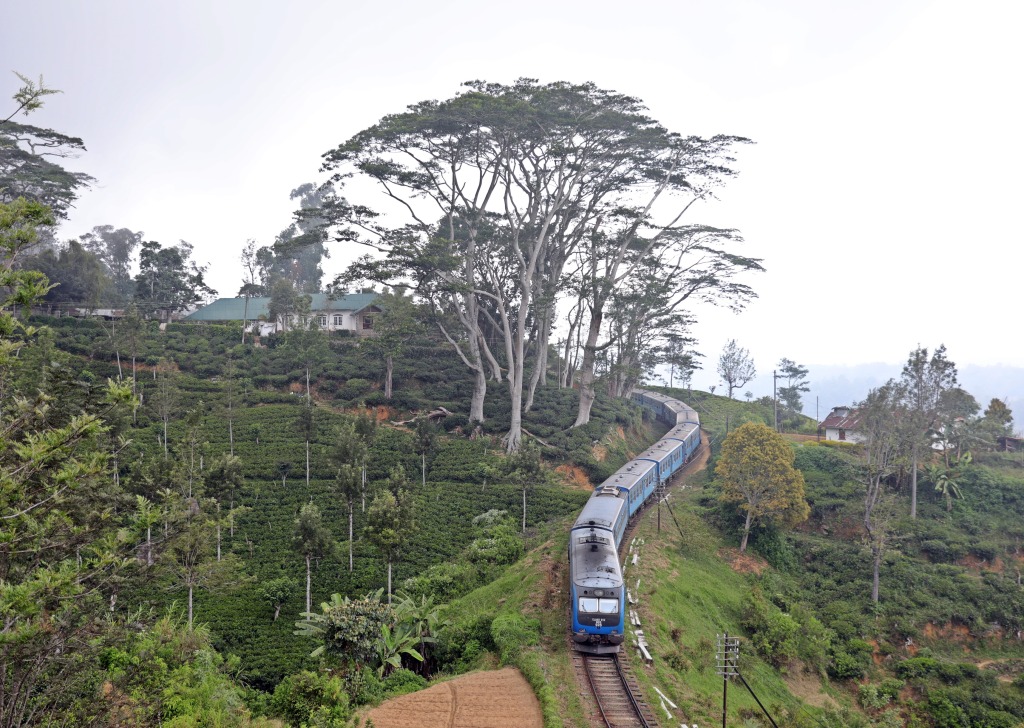
Dombatenne Tea Plantation, established by Sir Thomas Lipton, is a large plantation covering many of the hills in this region. At the top of the highest hill is Lipton’s Seat Lookout. We arrived at the lookout in time to watch a gorgeous sunrise. The skies turned red from the first sun’s rays and we could start to see the undulating ground in the valley below. Misty clouds were rising between the small hills creating a spectacular contrast. The hill top lookout has 360 degrees of breathtaking views. On the west side of the lookout, a near full moon was still high in the sky shining on the hills below. As the sun rose higher, we could see that the hills are a beautiful shade of green from the tea leaves. The trees are pruned and plucked regularly so the landscape looks like a fuzzy green blanket. It is one of the nicest views we’ve had in this country yet. As we walked back down the hill through the plantation, workers were just arriving to begin their work day. They all greeted us with a friendly hello.





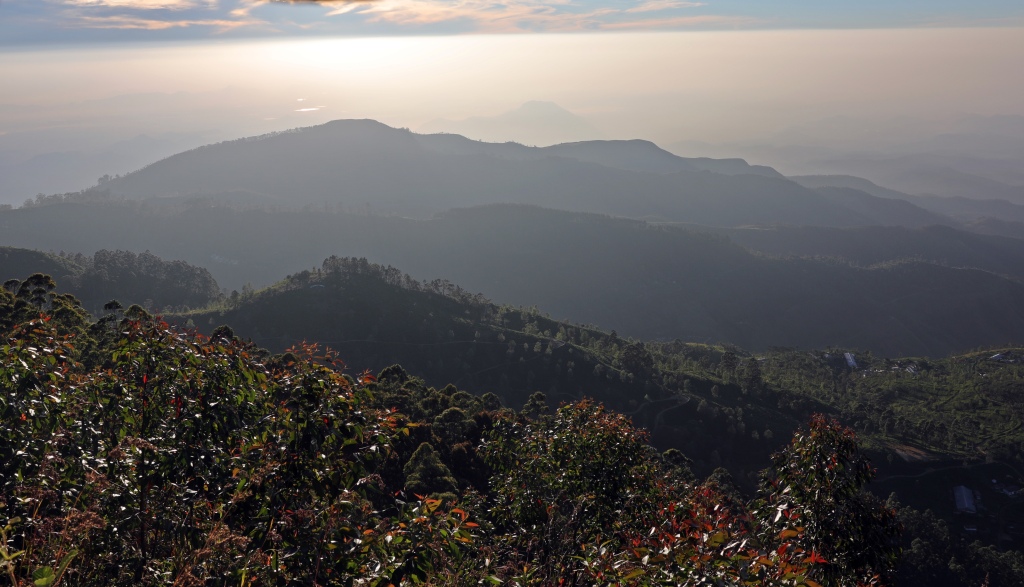


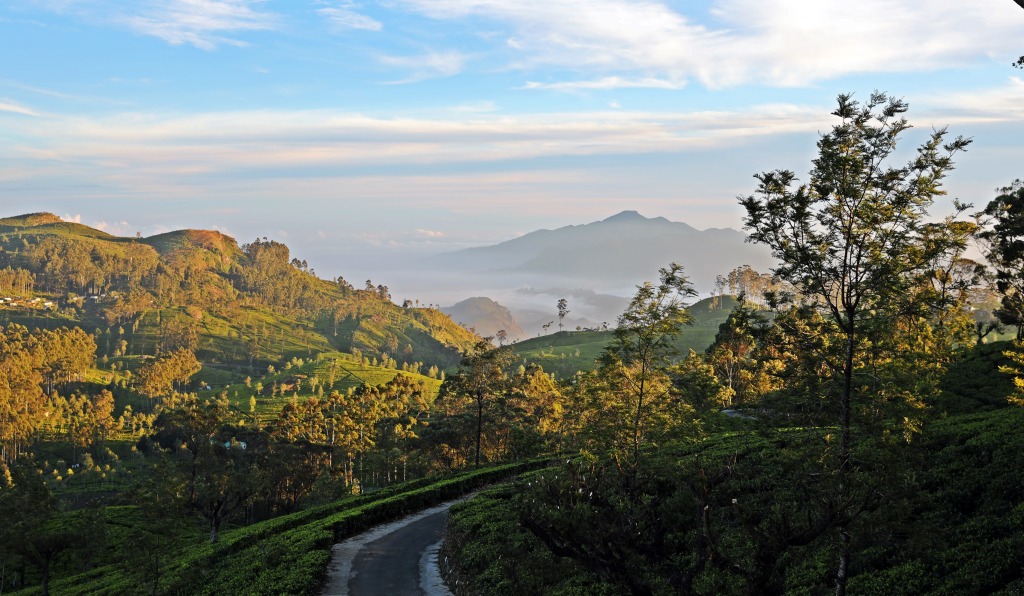



There are many legends around the interesting looking Sri Pada, also called Adam’s Peak. It’s an eye-catching view from far away. It’s a perfect triangle high above the surrounding mountains making it easy to see why there are so many legends attached to it. On the summit is a rock feature that, although it is 1.8m long, is associated as the footprint for either Buddha, Adam or Shiva depending on your religion. Buddhists believe it is the footprint that Buddha left behind on his third visit to Sri Lanka. Christians believe that when Adam was exiled from Eden, his first step on earth was on this peak, leaving his footprint. Accounts show that pilgrimages have been happening here for over 1000 years. Reaching the summit of Sri Pada is a very important pilgrimage for Buddhists especially those from Sri Lanka. Pilgrims go up the mountain at all times of day and stay on the summit until sunrise. At 2243m it is cold on the summit, especially overnight and most pilgrims that we saw had very little warm clothing. The 7 km walk leaves from the village of Nallathanni on a paved path with 5,500 cement stairs climbing 1000m elevation. It should take 2 to 2 ½ hours if there are no crowds. We made the mistake of going on a Sunday. There were tens of thousands of pilgrims and another 100 tourists. We left Nallathanni just after 2 am, thinking this was too early and we’d end up sitting on the summit, freezing, while waiting for the sunrise. We were surprised to see many of the kiosks along the trail still open, selling water, snacks, warm clothing, toys and jewelry at 2 am.


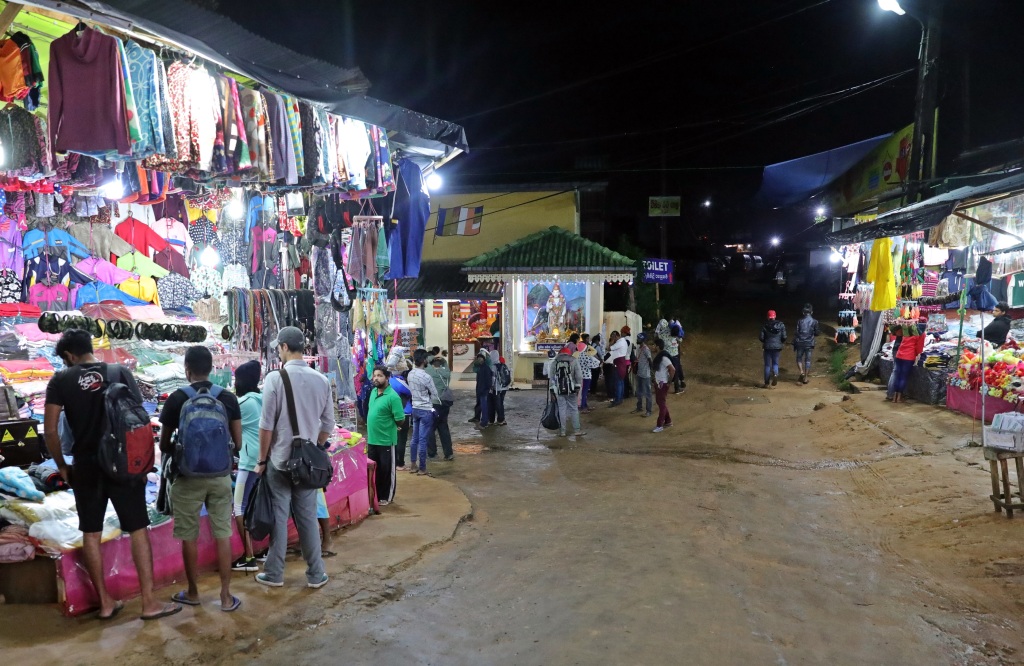


The hike went great for the first 1 ½ hours. We saw many people slowly making their way up the 5,500 steps, some struggling more than others. Many were singing folk songs as they walked together in groups. We passed an area called Ididkatupana. This is the spot where Buddha apparently stopped to mend his robe. Pilgrims mark this spot by wrapping a long thread on the end of a needle around shrubs.
After 1 ½ hrs with 200m left to climb, we came to a complete stop. The stairs were crammed full of people; 3 rows going up and 1 row coming down. The line moved very slow because the summit is small and those pilgrims on top were waiting for the sunrise before leaving to make space for others. For the next 2 ½ hrs we only moved 50 meters. At 6 am we were lucky to be stopped at an opening in the trees that allowed us to see a magnificent sunrise and the cloud forest below.





We stayed in the slow-moving line for another 45 minutes but had only moved another 10m in that time. We finally decided, as did most tourists, to turn around. It would most likely take 3 more hours to get to the summit. Even still, it was inspiring to see that amount of people with so much devotion that they were willing to do one of the most physically difficult things for them, and at temperatures near zero. We never did get to see the footprint at the top, but we were glad to have experienced this pilgrimage.







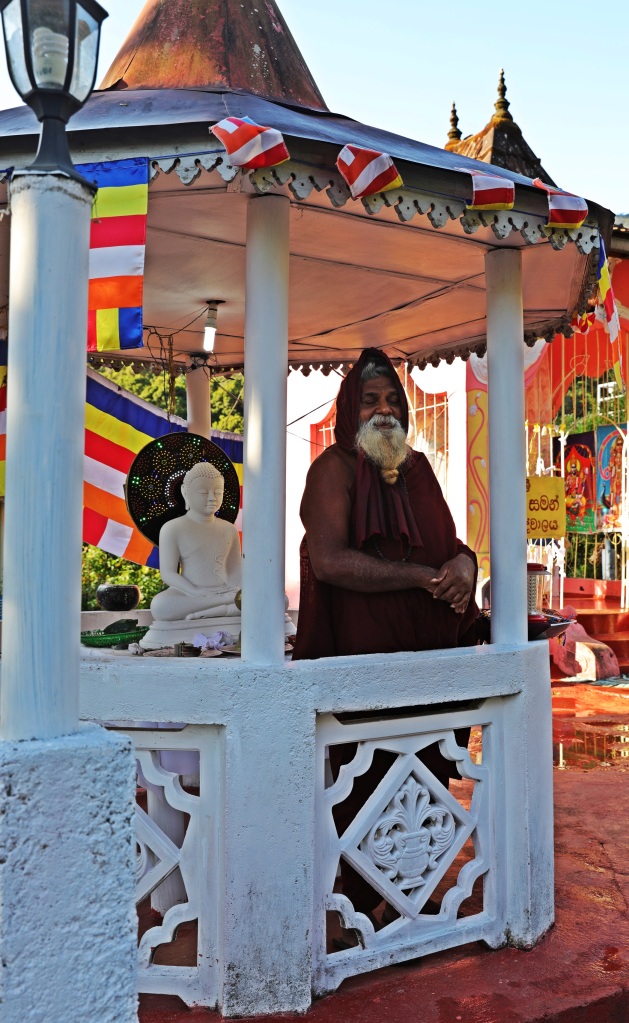
Coming up next: Ceylon Tea in the Highlands, Part 2
For extra pics from this trip go to Gallery/Sri Lanka. For extra pictures from other blogs go to Gallery at monkeystale.ca
To read about more of our adventures go to Destinations.
If you like what you read, please comment or share it using the links below.
Wow. You took such amazing pictures I feel like I was transported to Sri Lanka as well. One of these days, I’ll allot time to explore Sri Lanka. 🙂
LikeLiked by 1 person
Thank you Carl, Sri Lanka is such a beautiful country you ahould definitely try to travel here. It has beaches, highlands, history and amazing people.
LikeLiked by 1 person
Such a beautiful lush country. It looks like if you stood still too long it would quickly eat you up. Louise
LikeLiked by 1 person
That’s a great way to put it! I think it’s actually true!
LikeLike
This is such an informative post and you’ve made me so excited about doing some of these amazing hikes. I’m hoping that when I show my hubby the sunrise views from Lipton’s Seat he’ll be convinced to get up in the wee hours. I can’t get over the procession of pilgrims at Adam’s Peak…that alone is a sight to see. You captured the quintessential Nine Arches Bridge photo—stunning!
I’m debating about whether to pack my clunky running shoes. Can these hikes be done in a sturdy pair of Tevas/sports sandals?
LikeLiked by 1 person
Tell him it will be one of the nicest sunrises he’s ever seen. I wore runners for Ella’s hikes but Richard was in Tevas. The path down from Ella Rock will be the toughest part as it is loose sand on top of rocks, but it’s only 60m or so. Locals go in flip flops of course!
LikeLiked by 1 person